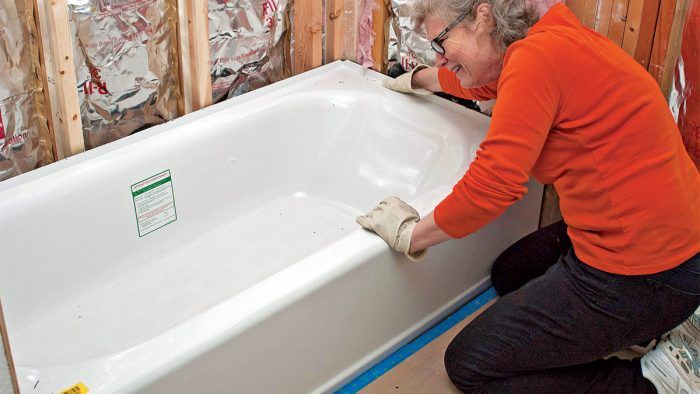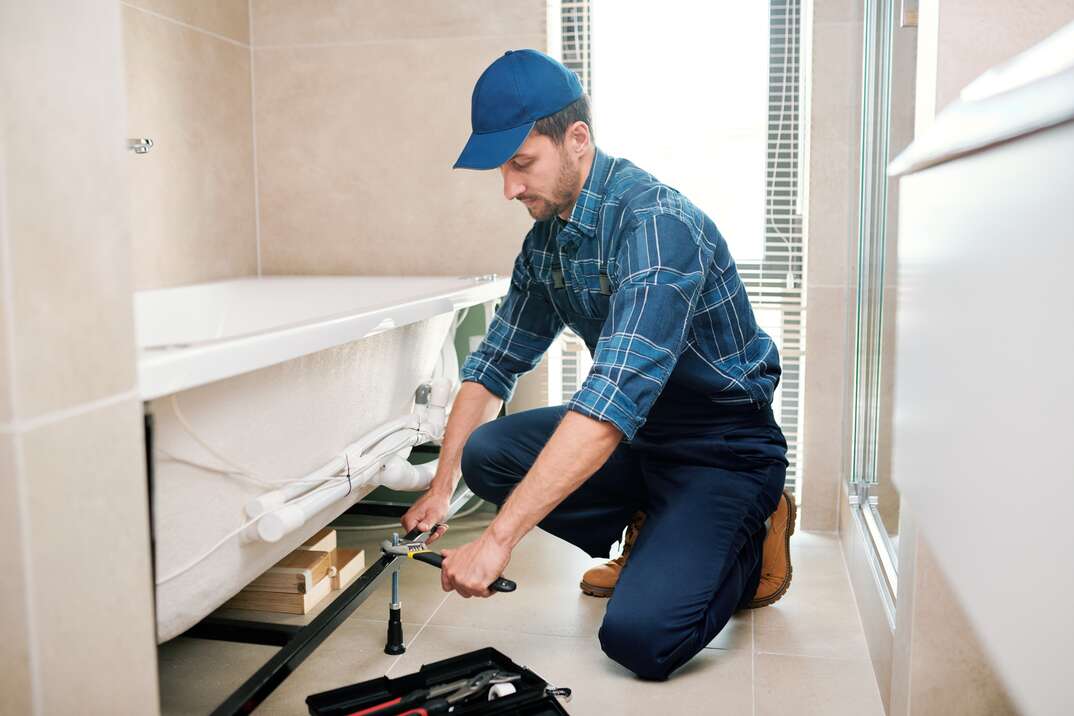Getting Familiar with Plumbing: Your Starting Point for When Installing a Bathtub
Getting Familiar with Plumbing: Your Starting Point for When Installing a Bathtub
Blog Article
Everybody has got their own unique rationale with regards to How to Install a Bathtub.

Mounting a bath tub isn't specifically brain surgery, yet it does call for strong plumbing, woodworking, and often, tiling abilities. Replacing an old tub with a brand-new one is additionally a moderately tough job. If the old bathtub is easily easily accessible, the job can move immediately; if you have to open up a wall surface to get rid of the old tub as well as place the new tub, the job is a lot harder. In either situation, the project is within a residence handyman's skills, although you will require an assistant to move out the old tub as well as set in the brand-new one. Ensure you have actually qualified yourself for the job as well as fit attempting it. Rather than hiring a professional to take over a halfway-completed project, it is better to think about employing one prior to you start. Possibilities are you might require an expert plumber to make tube links.
This post will certainly help you set up a new tub in your washroom if you have currently bought a new bathtub and also do not require to change the plan of your previous water supply pipes.
Your tools and also product checklist should make up the following:
Removing Old Touches
If you require to change old faucets with brand-new ones as a part of your setup, after that the first thing you should do is detach the water supply. After doing so, activate the faucets to drain pipes any kind of water remaining in the system. The process of getting rid of the existing faucets can be rather troublesome due to the limited gain access to that is commonly the situation.
Make use of a basin wrench (crowsfoot spanner) or a tap device to undo the nut that attaches the supply pipes to the faucets. Have a cloth all set for the continuing to be water that will originate from the pipes. As soon as the supply pipes have actually been eliminated, use the very same tool to loosen up the nut that holds the taps onto the bath/basin. You will require to quit the solitary taps from transforming during this procedure. Once the faucets have actually been eliminated, the holes in the bath/basin will need to be cleaned of any type of old securing substance.
Before going on to fit the brand-new taps, compare the pipeline links on the old faucets to the brand-new faucets. If the old faucets are longer than the brand-new faucets, then a shank adapter is required for the new faucets to fit.
Fitting New Touches
If the tails of the new taps are plastic, then you will certainly need a plastic adapter to stop damage to the string. One end of the adapter fits on the plastic tail of the faucet as well as the other end supplies a link to the existing supply pipelines.
If you need to fit a monobloc, then you will certainly need minimizing couplers, which connects the 10mm pipeline of the monobloc to the typical 15mm supply pipe.
Next, place the tap in the placing hole in the bath/basin ensuring that the washing machines are in location in between the tap and also the sink. Protect the faucet in place with the supplier provided backnut. When the faucet is securely in place, the supply pipelines can be attached to the tails of the taps. The faucets can either be connected by using corrugated copper piping or with typical faucet adapters. The previous type ought to be linked to the faucet ends first, tightening only by hand. The supply pipes can later be linked to the various other end. Tighten up both ends with a spanner after both ends have actually been linked.
Installing the Bathtub
Making use of both wood boards under its feet, put the tub in the required placement. The wood boards are practical in evenly spreading the weight of the bath tub over the area of the boards rather than concentrating all the weight onto four little points.
The next goal is to make sure that the bath tub is leveled all round. This can be achieved by inspecting the spirit level as well as readjusting the feet on the bath tub till the spirit level checks out level.
To mount taps, fit all-time low of the outermost adaptable faucet connector to the appropriate supply pipe by making a compression join; after that do the very same for the various other faucet.
Turn on the water system as well as inspect all joints as well as new pipework for leakages and also tighten them if essential. Fill up the tub as well as likewise check the overflow electrical outlet and also the typical outlet for leakages.
Lastly, fix the bathroom paneling as explained in the manufacturer's user's manual. Tiling and also sealing around the bath tub must wait until the tub has been made use of a minimum of when as this will resolve it into its last setting.
Preparing for the Setup
To start with, the supporting structure supplied with the bath needs to be fitted (if required) according to the maker's instructions. Next off, fit the faucets or mixer to the bathtub. When fitting the tap block, it is important to ensure that if the faucet features a plastic washing machine, it is fitted between the bath as well as the faucets. On a plastic bathroom, it is additionally sensible to fit a supporting plate under the taps unit to avoid stress on the tub.
Fit the versatile faucet adapters to the bottom of both faucets making use of 2 nuts and also olives (occasionally provided with the bathtub). Fit the plug-hole electrical outlet by smearing mastic filler round the sink electrical outlet opening, and afterwards pass the outlet with the hole in the bath. Use the nut supplied by the manufacturer to fit the plug-hole. Examine the plug-hole electrical outlet for an inlet on the side for the overflow pipeline.
Next, fit the end of the adaptable overflow pipe to the overflow outlet. Afterwards, screw the pipe to the overflow face which should be fitted inside the bathroom. Ensure you use every one of the supplied washing machines.
Link the catch to the bottom of the waste outlet on the bathtub by winding the string of the waste outlet with silicone mastic or PTFE tape, as well as screw on the trap to the outlet. Connect all-time low of the overflow tube in a similar manner.The bathroom need to now prepare to be fitted in its final placement.
Tiling Around the Bathtub
In the location where the bath satisfies the floor tile, it is necessary to secure the accompanies a silicone rubber caulking. This is essential as the installation can relocate sufficient to crack a stiff seal, triggering the water to pass through the wall between the bathroom and also the tiling, leading to problems with moisture as well as possible leaks to the ceiling below.
You can select from a selection of coloured sealers to assimilate your components and also installations. They are marketed in tubes and also cartridges, as well as can sealing gaps up to a width of 3mm (1/8 inch). If you have a larger gap to load, you can load it with spins of soaked newspaper or soft rope. Bear in mind to constantly fill up the bathtub with water before securing, to permit the motion experienced when the bathtub remains in usage. The sealer can split fairly early if you do not think about this motion before securing.
Additionally, ceramic coving or quadrant tiles can be made use of to edge the bathroom or shower tray. Plastic strips of coving, which are easy to use and reduce to size, are additionally easily readily available on the market. It is suggested to fit the tiles making use of water-resistant or water-proof adhesive as well as cement.
Bathtub Installation
How Important Is A Bathtub To Your Home?
High-quality baths, showers, and other bathroom updates are necessary when considering a smart investment in your home. It’s a room that you go to every day and one that is constantly being used by guests.The bathroom is one of the top trafficked rooms in a home and also one of the most valuable in terms of home resale.
Install Piping Before Tub
You will be using your existing drain and waste vent system, but pipes required include the hot and cold water supply lines and a pipe leading to a shower head. A mixing valve and shower head are also needed. Air chambers may be required.
Position the Tub
Lower the tub into place so that the continuous flange fits against the wall studs and rests on 1’x4' or 2’x4' supports. Anchor the tub to the enclosure with nails or screws inserted through the flanges into the studs.
NOTE: Remember, bathtubs and shower stalls may require support framing. A bathtub filled with water is extremely heavy, so check building codes and framing support before installing the tub.
Assemble Drain Connections
Assemble the bathtub drain connections by connecting the tub overflow with the tub drain above the trap, not beyond it. The trap will have a compression fitting that screws over the arm of the overflow assembly.
Place a Pipe For the Shower Head
First, locate a brass female threaded winged fitting and attach it to a framing support via a screw or a nail. Then run a pipe up the wall for the shower head. Sweat or solder the other side of the brass fitting to the top of the pipe.
Attaching Hot and Cold Water Lines
Attach your water lines for both hot and cold by sweating these directly into the hot and cold ports of the mixing valve. The mixing valve will be how water enters the tub’s system, not by the pipes themselves.
Install the Spout
Extend a piece of 1/2 inch pipe, or whichever length is specified in the manufacturer’s instructions, for the tub spout. Sweat on a male threaded fitting at the end of the pipe or use a brass nipple of the proper length and a 1/2 inch cap.
NOTE: At this point you should have your rough-in plumbing work inspected before proceeding further.
Check For Leaks
Restore the water pressure and check the drain connection and the supply pipes for any sign of leaking.
estore the Bathroom Wall
Replace the wall with moisture-resistant drywall as a base for your wall covering. Seal the joints between the wall and your new tub with silicone caulk as protection against water seepage.
https://www.berkeys.com/2016/12/02/bathtub-installation-dallas/

We hope you liked our topic on Tools You Need to Install a New Bathtub . Thanks for taking the time to read through our article post. You should take a moment to distribute this blog entry if you enjoyed it. I recognize the value of reading our article about How to Install a Bathtub.
Expert plumbing diagnostics and repair. Report this page